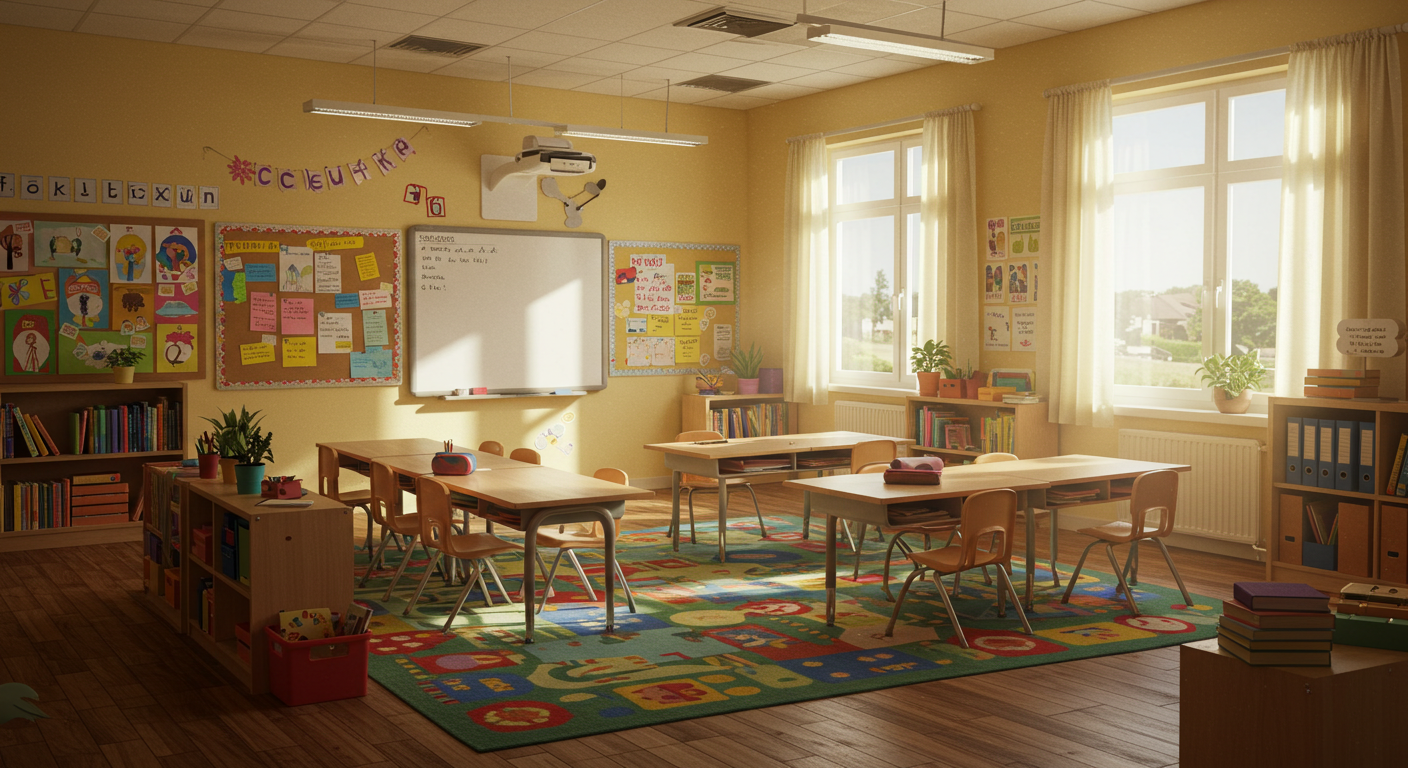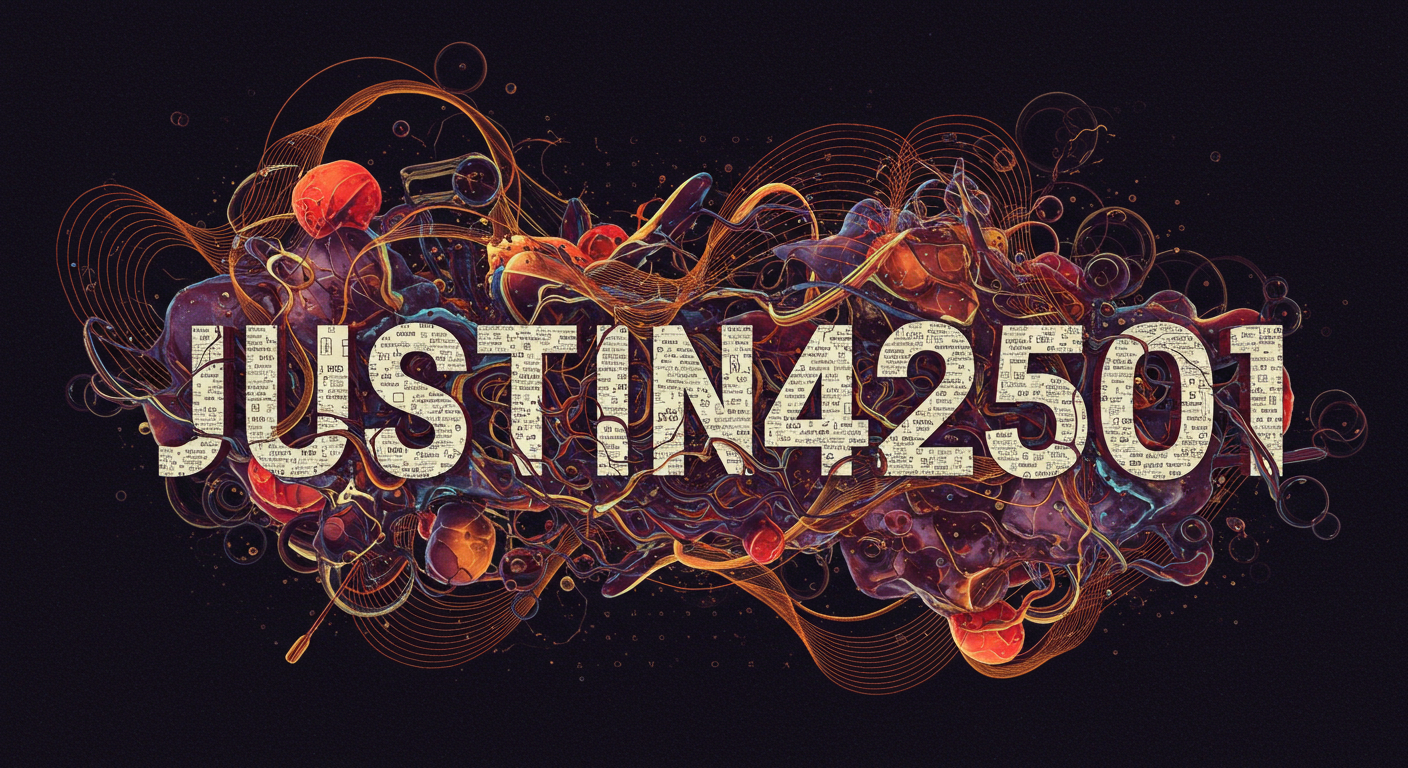Education
Classroom 15x: Optimize Your Learning Environments with Best Solutions

Creating the perfect learning environment is about more than just desks and chairs. It’s about designing a space where students feel engaged, productive, and inspired. With Classroom 15x, you have access to innovative tools and techniques tailored to elevate the learning experience for both teachers and students.
This blog explores practical solutions that blend technology, design, and teaching strategies to optimize your classroom environment.
Why Learning Environments Matter
The classroom environment directly impacts learning outcomes. Everything from lighting and seating arrangements to digital tools can enhance or impair a student’s ability to focus and retain information. According to a study from the University of Salford, well-designed classrooms can boost academic performance by up to 16%.
Classroom 15x was developed with one goal in mind: to provide the tools and solutions necessary to maximize these environmental benefits.
From classroom design to digital technology, here are the best solutions Classroom 15x offers to foster an engaging learning space.
Best Classroom Solutions from Classroom 15x
1. Flexible Seating Options
Gone are the days of rigid desk arrangements. Today’s classrooms require flexibility to accommodate different learning styles. Classroom 15x supports ergonomic and adaptable seating solutions that promote posture, reduce fatigue, and encourage collaboration.
- Key Tip: Implement movable furniture that can be easily adjusted for group work, one-on-one sessions, or lecture-style teaching.
2. Interactive Displays
Interactive whiteboards and digital displays are revolutionizing teaching. Classroom 15x offers technology that turns traditional lessons into interactive, immersive experiences. With tools like touchscreen displays, every student can participate and engage visually.
- Benefit: Interactive boards can improve student motivation by 76%, according to recent reports.
3. Smart Lighting Systems
Proper lighting is often overlooked but plays a critical role in maintaining student focus. Classroom 15x introduces smart lighting systems that adjust brightness based on the time of day, reducing eye strain and improving alertness.
- Pro Tip: Opt for natural lighting or LED light with color-temperature adjustments to keep students energetic and attentive.
4. Acoustic Panels
Minimizing noise distractions is crucial in busy classrooms. Classroom 15x offers sleek acoustic panels that reduce ambient noise, creating a calm and focused environment.
- Why this matters: A quiet classroom improves information retention and reduces student stress levels.
5. Digital Collaboration Tools
Enable seamless collaboration with digital tools like shared screens, learning platforms, and real-time feedback apps. Classroom 15x integrates these tools smoothly into your existing setup.
- Example Use Case: Students can collaborate on a group project through shared software while teachers track their progress.
6. Customizable Storage Solutions
Clutter can hinder productivity. Use storage solutions from Classroom 15x to optimize your space and reduce distractions. Modular storage cabinets and wall-mounted shelving help maximize classroom space.
- Quick Win: A well-organized classroom supports clear thinking and allows students to focus on their tasks.
7. Air Quality Monitors
Air quality can directly affect brain function. Classroom 15x includes air quality monitoring systems to ensure proper ventilation and reduce CO2 buildup.
- Fact: Improving air quality can enhance cognitive performance by 11%, according to Harvard research.
8. Gamified Learning Applications
Engage students using gamified apps supported by Classroom 15x’s intuitive technology. These tools make learning fun, turning complex topics into digestible and interactive games.
- Result: Gamified learning improves student engagement by 67%, leading to better academic performance.
9. Adaptable Whiteboard Systems
Classroom 15x offers multi-functional whiteboard solutions that integrate projection capabilities, making them suitable for a range of traditional teaching and tech-enabled presentations.
- Bonus: They work seamlessly with interactive displays for hybrid teaching models.
10. Teacher’s Hub Technology
Streamline lesson planning, grading, and presentations with centralized teacher hubs. Classroom 15x integrates applications that offer easy lesson tracking, test grading, and real-time student performance data.
- Advantage: Teachers save hours of planning time with organized, user-friendly tech.
11. Mindfulness Zones
Classroom 15x designs mindfulness spaces with comfortable seating, greenery, and calming colors. These zones are perfect for students needing a break or a quiet space to refocus.
- Student Benefit: Fosters emotional well-being and reduces classroom anxiety.
12. Adaptive Learning Platforms
Every student learns at their own pace. Adaptive learning technologies supported by Classroom 15x personalize teaching, offering tailored resources based on individual needs.
- Solution: Platforms analyze student data and adapt lessons to match performance levels.
13. Wi-Fi Optimization
Seamless internet access is critical for today’s connected classrooms. Classroom 15x ensures high-speed Wi-Fi with robust signals so that technology integration works without interruptions.
- Pro Tip: Position routers strategically to reduce signal dropouts.
14. STEM Learning Kits
Equip your students with tools designed for Science, Technology, Engineering, and Math (STEM). Classroom 15x features robotics kits, coding platforms, and 3D printers, sparking creativity and innovation in students.
- Outcome: Students develop problem-solving skills crucial for 21st-century careers.
15. Community Engagement Platforms
Extend classroom learning by connecting with parents and other educators via online portals. Classroom 15x platforms offer community engagement tools that encourage collaboration.
- Key Feature: Share progress reports, upcoming events, and announcements with ease.
Elevate Your Classroom Experience
Optimizing a learning environment doesn’t need to be overwhelming. With Classroom 15x’s comprehensive solutions, you can create a classroom that promotes student engagement, enhances productivity, and supports long-term success.
Whether it’s flexible seating, smart lighting, or cutting-edge technology, small changes can make a big impact. Remember, a well-designed classroom doesn’t just teach students; it inspires them.
Start optimizing your classroom today with Classroom 15x!
Final Thoughts
Creating an effective and inspiring learning environment is a continuous process that evolves with the needs of students and educators. Classroom 15x empowers teachers to make meaningful enhancements, fostering a space where creativity, collaboration, and curiosity can thrive. By integrating innovative tools and strategies, you’re not just preparing students for the present—you’re equipping them with the skills and confidence needed for a successful future. The classroom is more than a place of instruction; it’s a foundation for lifelong learning. Choose Classroom 15x and take the first step toward transforming education today!
Conclusions
Classroom 15x represents a forward-thinking approach to education, prioritizing both students’ and educators’ needs. By leveraging its innovative features, you can create a learning environment that adapts to modern challenges and inspires excellence. The path to impactful education begins with deliberate choices, and Classroom 15x offers the tools necessary to make a real difference. Start building the classrooms of tomorrow today—because the future of education begins with the decisions we make now.

Education
Theta Learning Point: Practical Strategies for Implementing in Your Study Routine

In today’s fast-paced academic and professional environment, students and learners are constantly seeking innovative ways to enhance productivity and comprehension. One effective approach that has gained attention is the Theta Learning Point, a concept rooted in combining focus with memory retention techniques. Understanding and applying this method in your daily schedule can significantly improve your ability to absorb knowledge, retain key concepts, and perform better in exams or skill development.
Understanding Theta Learning Point
The Theta Learning Point refers to a state of optimal mental performance, often associated with calm concentration, deep learning, and heightened memory retention. This concept connects with the brain’s theta wave activity, which plays a role in creativity, problem-solving, and information absorption. Unlike traditional learning strategies that focus only on repetition, this approach emphasizes a balance between mental relaxation and focused attention.
To appreciate how this method works, it is essential to identify its core principles:
-
Encouraging relaxed focus instead of stress-driven learning.
-
Creating mental connections through visualization and association.
-
Improving long-term memory recall with active engagement.
Why Theta Learning Point Matters in Study Routines
When learners experience stress or fatigue, the brain often struggles to retain information effectively. The Theta Learning Point provides a bridge between relaxation and mental alertness. By reaching this state, you can optimize your energy levels, reduce burnout, and sharpen your focus.
Research indicates that memory retention improves when learning is associated with mental calmness and visualization. This means that incorporating such strategies not only strengthens short-term performance but also creates long-lasting knowledge foundations.
Key Components of Theta Learning Point
To implement Theta Learning Point strategies successfully, it is important to recognize the components that shape this method:
-
Relaxation Techniques: Deep breathing, meditation, or brief breaks to reset focus.
-
Visualization Exercises: Associating concepts with images or real-life examples.
-
Active Recall Practices: Testing yourself instead of passive rereading.
-
Routine Consistency: Developing a daily rhythm that fosters balance.
Practical Strategies to Implement Theta Learning Point
Integrating Theta Learning Point into your study routine requires intentional planning and practice. Below are some effective strategies you can adopt.
Create a Study Environment Conducive to Theta State
Your study environment directly influences your concentration levels. Quiet surroundings, soft background music, and minimal distractions can help activate the relaxed yet focused mindset associated with the Theta Learning Point.
Use Visualization for Complex Topics
Visual learning plays a critical role in memory formation. For example, if you are studying biology, you can visualize cell processes as dynamic images rather than reading static text. Visualization aligns with the Theta Learning Point by engaging creative parts of the brain, enhancing both comprehension and recall.
Practice Mindful Breaks
Long, uninterrupted study sessions often lead to mental fatigue. Incorporating short, mindful breaks helps maintain attention levels. During these breaks, you can close your eyes, breathe deeply, and allow your brain to process information naturally. This rhythm of focus and rest mirrors the principles of Theta Learning Point.
Apply Active Recall and Spaced Repetition
Instead of re-reading notes, test your memory by reciting concepts or answering practice questions. Pair this with spaced repetition—reviewing material over intervals—to align with the Theta Learning Point. This strategy strengthens neural pathways and ensures long-term retention.
Develop Consistent Study Rituals
Consistency creates familiarity, and familiarity reduces mental resistance. Establishing a ritual—such as studying at the same time daily—allows your brain to transition smoothly into the theta state. A consistent rhythm supports better focus, which is at the core of the Theta Learning Point.
Table: Strategies for Implementing Theta Learning Point
| Strategy | Description | Benefit |
|---|---|---|
| Study Environment Setup | Quiet space, minimal distractions, soft music | Promotes relaxed concentration |
| Visualization Techniques | Converting concepts into mental images | Enhances memory and comprehension |
| Mindful Breaks | Short relaxation moments between sessions | Prevents fatigue and refreshes the mind |
| Active Recall & Repetition | Self-testing and reviewing at intervals | Strengthens long-term retention |
| Consistent Rituals | Regular, structured study habits | Builds mental readiness and discipline |
The Role of Technology in Theta Learning Point
Modern learning tools can amplify the effectiveness of Theta Learning Point strategies. Apps that encourage mindfulness, digital flashcards, and productivity timers help students stay aligned with focused learning states. Technology bridges traditional study methods with innovative approaches, making implementation more seamless.
Benefits of Using Theta Learning Point
Applying the Theta Learning Point in your study routine brings measurable benefits:
-
Improved Focus: Students achieve deep concentration without distraction.
-
Higher Retention Rates: Long-term memory recall is strengthened.
-
Reduced Stress: Relaxed focus lowers anxiety linked to performance.
-
Creativity Boost: Visualization enhances creative thinking skills.
Overcoming Challenges with Theta Learning Point
While the approach is powerful, learners may face initial challenges in maintaining consistency or creating the right environment. Overcoming these obstacles involves discipline, patience, and gradual adjustment. For example, setting daily reminders or joining study groups can reinforce these strategies until they become second nature.
Real-Life Applications of Theta Learning Point
The Theta Learning Point can be applied beyond academic studies. Professionals preparing for certifications, language learners, or individuals developing creative skills can also benefit. By integrating relaxation with structured learning, this approach becomes a universal tool for lifelong education.
Conclusion
The Theta Learning Point is more than just a study technique—it is a holistic approach to learning that emphasizes balance between relaxation, focus, and consistency. By understanding its principles and applying practical strategies such as visualization, mindful breaks, and active recall, learners can transform their routines into powerful tools for success. Whether you are a student preparing for exams or a professional seeking skill development, this method offers a sustainable pathway to knowledge mastery.
FAQs
1. What is Theta Learning Point?
Theta Learning Point is a learning approach that combines relaxed focus with active engagement, enhancing memory retention and study efficiency.
2. How does it improve study performance?
It improves focus, reduces stress, and strengthens memory recall through visualization, mindful breaks, and consistent study rituals.
3. Can it be applied to professional learning?
Yes, the strategies are suitable for students, professionals, and lifelong learners alike.
4. Do I need special tools to practice Theta Learning Point?
Not necessarily. While technology can help, the method mainly relies on mindset, environment, and consistent practice.
5. How long does it take to see results?
Most learners notice improvements in focus and retention within a few weeks of consistent application.
Education
Exploring the Meaning and Impact of Tarefe in Modern Contexts

Introduction: Understanding Tarefe and Its Significance
In today’s interconnected world, the concept of holds increasing relevance. Whether encountered in literature, culture, or dialogue, tarefe invites us to appreciate subtle forms of kindness, respect, and heartfelt recognition. In this article, we’ll delve into the origin of , examine how it manifests in various settings, and consider its enduring impact on communication and relationships.
What Is Tarefe—Origins and Definition
Historical Roots
The term traces its origins to traditions rooted in hospitality and etiquette. While interpretation may differ across regions, at its core, embodies an expression of warm acknowledgment—a greeting, a compliment, or a gesture that honors the recipient.
Contemporary Definition
In modern usage, often refers to sincere appreciation or praise—whether spoken or written. It’s not about grandiosity; rather, is subtle, thoughtful, and often heartfelt.
The Role of Tarefe in Communication
Enhancing Personal Interactions
In everyday interaction, incorporating can elevate conversations—adding a human touch that fosters connection. A well-placed can soften critique, express gratitude, or strengthen bonds.
Building Professional Relationships
In workplaces, plays a powerful role. A genuine nod to a colleague’s effort or a sincere during a presentation can build trust, improve morale, and reinforce mutual respect.
Tarefe in Cultural and Artistic Expressions
Literature and the Art
Writers and poets often weave into their work to evoke warmth or to highlight characters’ virtues. A well-crafted can enrich narrative depth and emotional resonance.
Performing Arts and Tarefe Moments
In theater and performance, may take the form of acknowledgments, public praise, or moments where artists celebrate each other’s craft—elevating stage presence and audience connection.
How to Use Tarefe Authentically
Crafting Genuine Tarefe
Authenticity is key when delivering . It shouldn’t feel forced or perfunctory. Pay attention to detail—voice tone, body language, and timing—to ensure your resonates as sincere.
Knowing When to Offer Tarefe
Timing matters. Whether congrats on a small milestone or recognition of someone’s steady effort, should feel well-matched to the context. Offering too much can dilute its impact; however, a well-placed one can be truly meaningful.
Tarefe in the Digital Age
Social Media and Digital Tarefe
Online platforms offer endless opportunity —a heartfelt comment, a thoughtful mention, or public recognition. However, authenticity remains critical. A digital feels most potent when it reflects genuine sentiment.
Digital Overload and Preserving Tarefe Value
In a sea of likes and shares, a true stands out. Thoughtfully crafted words—rather than generic emojis—carry emotional weight. This careful approach ensures retains its heartfelt character, even in digital spaces.
Benefits of Embracing Tarefe in Daily Life
Strengthening Bonds Through Tarefe
Regularly offering —when earned and heartfelt—creates emotional resonance in both personal and professional relationships. It fosters trust, respect, and connection.
Boosting Well-Being With Tarefe Culture
Practicing has psychological benefits too. Giving and receiving genuine appreciation can uplift mood, special days, and overall satisfaction—nurturing positive mental health.
Overcoming Common Pitfalls
Avoiding Inauthentic
To preserve the impact , avoid overuse or using it as empty politeness. Overuse may render it superficial—diminishing its effectiveness.
Ensuring Cultural Sensitivity in Tarefe
Expressions may vary across cultures. What feels like heartfelt praise in one context might seem awkward or inappropriate in another. Aiming for cultural awareness ensures your resonates positively.
Conclusion: Celebrating Connection Through Tarefe
In a world often driven by speed and efficiency, practicing invites a pause—a moment to honor, support, and connect with sincerity. Whether woven into daily conversation, creative work, professional interactions, or online exchanges, enriches lives with subtle yet profound recognition. Embrace this heartfelt practice, and you may discover deeper connections, stronger bonds, and a more empathetic world.
Education
Thai Mythloogy Learn – Unlocking the Mystical World of Thai Legends

Introduction: Thai Mythloogy Learn – A Journey Through Ancient Legends
Thailand is a land of vibrant culture, stunning temples, and deep-rooted beliefs. One of the most captivating aspects of this heritage is its mythology. If you’re curious about divine beings, epic creatures, and spiritual traditions, then Thai mythloogy learn is a journey you won’t want to miss. This guide helps you uncover the essence of Thai folklore—where it comes from, what it means, and why it’s still so deeply respected today.
Whether you’re a mythology enthusiast, a cultural researcher, or a traveler seeking meaning behind Thai rituals, understanding Thai mythloogy learn opens a magical window into Southeast Asia’s rich spiritual world.
1. What is Thai Mythloogy? Learn the Origins and Influences
1.1 Rooted in Hinduism and Buddhism
Thai mythology is a unique blend of Hindu, Buddhist, and indigenous animist beliefs. As you dive into Thai mythloogy learn, you’ll notice influences from Indian epics like the Ramayana—known in Thailand as Ramakien—merged with Buddhist cosmology and local ghost stories.
1.2 Oral Traditions and Folklore
Before written records, many of Thailand’s myths were passed down orally. Learning Thai mythology means exploring tales shared by monks, elders, and villagers. These stories served as moral lessons, spiritual warnings, and entertainment.
2. Thai Mythloogy Learn: Key Figures in the Pantheon
2.1 Phra Narai (The Thai Vishnu)
Phra Narai, the Thai counterpart of the Hindu god Vishnu, appears throughout mythology. He is often portrayed as a powerful deity maintaining cosmic order. In your Thai mythloogy learn journey, you’ll encounter several of his avatars, including Rama from the Ramakien.
2.2 Nang Kwak – The Goddess of Prosperity
A beloved female deity, Nang Kwak is frequently seen in shops and homes, believed to bring wealth and good luck. She plays a significant role in daily spiritual life, especially for business owners.
2.3 Garuda – The Mythical Bird
A major figure in both Thai state symbolism and mythology, Garuda is a majestic eagle-like creature and the mount of Phra Narai. Studying Thai mythloogy learn would be incomplete without understanding Garuda’s role as a divine protector.
3. Thai Mythloogy Learn: Creatures and Spirits from Thai Folklore
3.1 Phi – Thai Ghosts and Spirits
Ghosts, or phi, are central to Thai mythology. Unlike Western horror, Thai spirits range from terrifying to protective. Learn about:
-
Phi Krasue – A floating female head with glowing organs
-
Phi Pop – A spirit that possesses and feeds on humans
-
Chao Kam Nai Wen – Spirits of karma and justice
These entities show the deeply spiritual and moral nature of Thai mythloogy learn.
3.2 Naga – Serpent Beings of the Rivers
Nagas are serpent deities believed to guard treasures and rivers, particularly the Mekong. They are both feared and revered in Thai culture and often appear in temple sculptures.
4. Thai Mythloogy Learn in Literature and Art
4.1 The Ramakien: Thailand’s National Epic
One of the most important texts in Thai mythology is the Ramakien, a localized retelling of the Hindu Ramayana. Rich in drama, battles, love, and divine intervention, it remains a cornerstone of Thai theatre, art, and education.
4.2 Influence in Dance and Theatre
Khon, the classical masked dance drama, brings Thai myths to life on stage. Characters like Hanuman (the monkey god) and demons like Tosakanth (Ravana) are portrayed with elaborate costumes and storytelling.
Understanding Thai mythloogy learn through performance offers a more immersive experience than just reading texts.
5. Thai Mythloogy Learn in Daily Life and Religion
5.1 Spirit Houses
Ever seen miniature temples outside homes or businesses in Thailand? These are spirit houses. They honor the land’s guardian spirits and are part of the daily spiritual routine, showing how Thai mythloogy learn is lived, not just studied.
5.2 Festivals and Rituals
Many Thai festivals have mythological roots. For instance:
-
Loy Krathong – Based on the water goddess
-
Songkran – Involves mythical rituals to wash away bad luck
-
Rocket Festival – Celebrates fertility and rain gods
By participating in these events, you don’t just witness mythology—you live it.
6. Thai Mythloogy Learn for Travelers and Learners
6.1 Must-Visit Mythological Sites in Thailand
To fully embrace Thai mythloogy learn, visit:
-
Wat Phra Kaew (Temple of the Emerald Buddha) – Home to mythological murals from the Ramakien
-
Erawan Shrine in Bangkok – Dedicated to Brahma, blending Hindu-Buddhist beliefs
-
Naga Cave in Bueng Kan – Said to be the home of the serpent deity
These sites are powerful cultural symbols that help you visualize mythology in the real world.
6.2 Books and Resources
For deeper understanding, read:
-
Thai Myths & Legends by T. Terwiel
-
The Ramakien translated editions
-
Thai folklore podcasts and YouTube documentaries
A structured journey combines reading, watching, and real-life experiences.
7. Why Thai Mythloogy Learn Is Important in Modern Times
7.1 Cultural Identity and Heritage
Thai mythology is not just a set of stories—it’s a living part of Thailand’s cultural DNA. Learning about it fosters respect for local beliefs and traditions, especially if you’re visiting or living in Thailand.
7.2 Lessons in Morality and Spiritual Wisdom
Many myths offer life lessons—about karma, compassion, loyalty, and respect. These themes resonate across cultures and provide timeless guidance.
7.3 Relevance in Pop Culture
Thai mythology is making its way into modern media—films, games, novels, and even mobile apps. As global interest in mythology grows, knowing about can help you better appreciate these adaptations.
Conclusion: Embrace the Magic of Thai Mythloogy Learn
To truly appreciate Thai culture, it’s essential to understand its stories, gods, and mythical beings. Whether you’re curious about spiritual beliefs, fascinated by mythical creatures, or just love storytelling, exploring is an enriching adventure.
It offers more than just entertainment—it provides insight into a culture that honors balance, karma, respect, and mystery. So next time you visit Thailand or read about its legends, remember: every shrine, every statue, and every spirit has a story worth discovering.
-

 Business9 months ago
Business9 months agoUnderstanding the Significance of License Plate 鲁Q 669FD
-

 Technology8 months ago
Technology8 months agoIs 8884216488 a Scam? Debunking Common Myths
-

 Technology8 months ago
Technology8 months ago164.68111.161: A Comprehensive Guide
-

 Digital Marketing8 months ago
Digital Marketing8 months agoWepbound: The Future of Digital Connectivity
-

 Entertainment8 months ago
Entertainment8 months agoStreameast: The Best Free Live Sports Streaming Platform in 2025
-

 Technology9 months ago
Technology9 months agoJustin42501: Redefining The Future Of Digital Connection and Growth
-

 Crypto8 months ago
Crypto8 months agoCrypto30x.com GG: Is It the Future of Crypto Investment?
-

 Blog5 months ago
Blog5 months agoهنتاوي com: A Unique Anime Universe Awaits!
-

 Crypto9 months ago
Crypto9 months agoCrypto30x.com AC Milan: A New Era for Fans Through Digital Currency
-

 Digital Marketing8 months ago
Digital Marketing8 months agoHow Adsy.pw/hb3 is Revolutionizing Online Advertising Strategies